Soviet tactical missile system 9K72 "Elbrus"
After creating nuclear weapons in the United States, due to the limited number and considerable size of nuclear bombs, it was considered as a means of destroying large, especially important goals and an instrument of political pressure and nuclear blackmail of the USSR. However, with the accumulation of stocks and miniaturization, it became possible to deploy nuclear warheads on tactical carriers. Thus, nuclear weapons have become weapons of the battlefield. With the help of nuclear charges of relatively small power, it is possible to solve the problems of breaking through long-term defense, destroying the accumulation of enemy troops, headquarters, communications centers, airfields, naval bases, etc.
At the first stage, tactical bomb carriers were tactical (front-line) and deck aircraft aviation. However, aviation, with many of its advantages, could not solve the whole range of problems. Jet combat aircraft had a number of limitations related to the accuracy and safety of bombing, weather conditions and time of day. In addition, aviation is vulnerable to air defense systems, and the use of nuclear weapons from low altitudes is associated with great risk for the carrier itself.
The use of nuclear weapons on the battlefield required fairly accurate, all-weather, invulnerable to air defense systems and, if possible, mobile and compact delivery systems. They were tactical and operational-tactical missile systems. Since 50-ies, in the United States were created TP and OTR with engines operating on both solid and liquid fuels. Rockets "Honest John", "Little John", "Sergeant", "Corporal", "Lacrosse", "Lance" had a fairly high mobility, their accuracy allowed nuclear strikes on objects located near the line of military contact.
Naturally, similar work on the creation of army and front-line ballistic missiles was carried out in the Soviet Union. In 1957, the operational-tactical missile P-11, created in OKB-1 SP, was adopted. Queen. Unlike the rockets created on the basis of the German A-4 (V-2), which used alcohol as a fuel, and the oxidizer was liquid oxygen - the P-11 became the first Soviet rocket of this class on high-boiling fuel components.
The transition to fuel - TM-185 on the basis of light petroleum products and the oxidizer - "Melange" based on concentrated nitric acid - has significantly increased the time the rocket was in the filled form. The displacing method of fuel and oxidizer delivery in the LRE (compressed gas pressure) significantly reduced the mass and size characteristics of the rocket and its cost. Thanks to the introduction of new components of fuel and oxidizer, it became possible to transport the combat-loaded tucked rocket to the launcher. The procedure for launching a rocket engine was also greatly simplified; for this purpose, starting fuel was used, which ignites spontaneously when in contact with an oxidizer - “Samin”.
With a starting mass of 5350 kg, the launch range of OTP P-11 with a warhead weighing 690 kg was - 270 km with a CEP - 3000 meters. Originally, only high-explosive and chemical warheads were used. This was due to the fact that in 50-ies the Soviet nuclear industry failed to create sufficiently compact warheads. For P-11, warheads fueled with liquid highly radioactive substances, like chemical warheads, were also developed; they were supposed to create implacable foci of infection on the way of the attacking enemy troops and to make large transport hubs and airfields unsuitable for use.
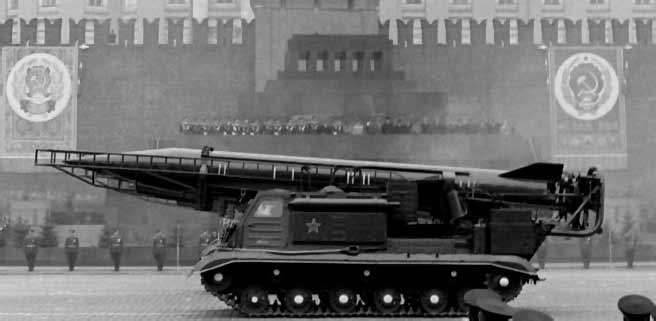
At the very beginning of the 60-x, the upgraded P-11M was entered into service. The main difference of this rocket was the equipment of a nuclear warhead with a mass of 950 kg, as a result of which the maximum launch range decreased to 150 km. In September, two test launches of the P-1961M with nuclear warheads were carried out on Novaya Zemlya in September 11. Full-scale nuclear tests demonstrated acceptable accuracy and a good striking effect. The power of nuclear explosions was within 6-12 CT.
In addition to the land variants, there was also a sea-going missile, the P-11FM. She was put into service in 1959 year. The D-1 rocket complex with the R-11FM rocket was part of the armament of diesel submarines of 629 Ave.
Soon after adopting the P-11 OTRK, the question arose of a radical improvement in its characteristics. The military was primarily interested in increasing the missile launch range. An analysis of the P-11M rocket scheme has shown the futility of attempts to further modernize missiles with a pressurized fuel supply system. Therefore, when creating a new rocket, it was decided to use an engine with a turbo-pump fuel supply system. In addition, the turbopump assembly made it possible to achieve better firing accuracy in range.
Complex operational tactical purposes 9K72 "Elbrus" with the P-17 rocket (GRAU index - 8K14) was developed at SKB-385 (chief designer - VP Makeev), while developing the rocket it had the P-300 index. To speed up the creation of a new complex, the mass and dimensional characteristics of the P-17 rocket were chosen close to the P-11М. This made it possible to use part of the units and equipment from the P-11M rocket, which, in turn, saved time and money.
Despite the fact that the P-17 and P-11M missiles were similar in appearance and used the same fuel and oxidizer, they had little in common in terms of design. The internal layout was completely changed and a more sophisticated control system was created. The rocket P-17 used a new, much more powerful engine, created in OKB-5 (chief designer - AM Isaev).
12 December 1959 of the year at the Kapustin Yar test site the first test launch of the P-17 rocket took place. 7 November 1961, four self-propelled tracked 2P19 launchers with P-17 missiles passed for the first time during a military parade on Red Square.
24 March 1962, the tactical missile system 9K72 "Elbrus" with the 8К-14 (Р-17) missile was adopted by a decree of the USSR Council of Ministers. In NATO countries, the complex received the designation SS-1c Scud B (English Scud - Squall). In the Soviet Union, the 9K72 complexes were consolidated into the missile brigades of the Ground Forces. Usually the brigade consisted of three fire divisions, with three batteries each. Each battery had one SPU and TZM.
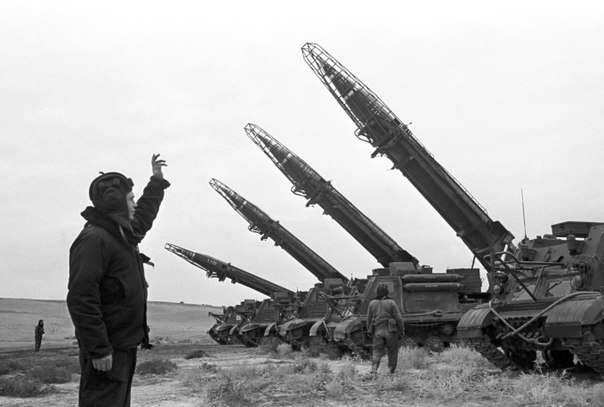
Initially, the missile complex was used to transport and launch a rocket with a launch weight of 5860 kg — the tracked SPU was used on the basis of the ISU-152, similar to the one used for the transportation and launch of the Р-11М. However, the tracked chassis with good cross-country ability did not satisfy the military in terms of travel speed, power reserve, and destroyed the road surface. In addition, significant vibration loads when moving on the tracks adversely affected the reliability of the missiles. In 1967, the missile brigade began to receive SPU 9P117 on the four-axis chassis of the MAZ-543P. By the end of the 70-x, the wheeled chassis gradually replaced the tracked, but in some places with difficult road conditions, the tracked vehicle was operated until the end of the 80-x.
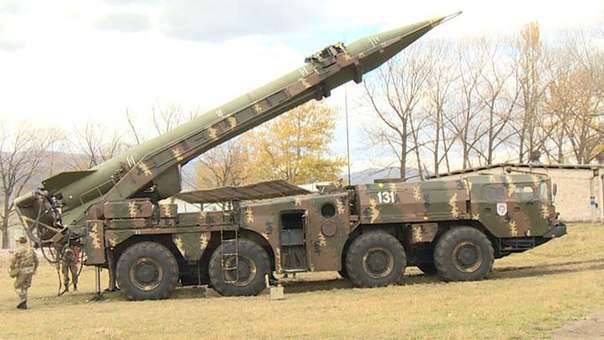
From the outset, the P-17 was designed as a means of delivering tactical nuclear weapons with a power of 5-10 kt with a maximum range of 300 km. The CWE was within 450-500 meters. In 70, new thermonuclear combat units with 20, 200, 300 and 500 CTs were created for the Elbrus missiles. When operating a nuclear warhead missile, a special thermostatic cover was put on the head of the missile.
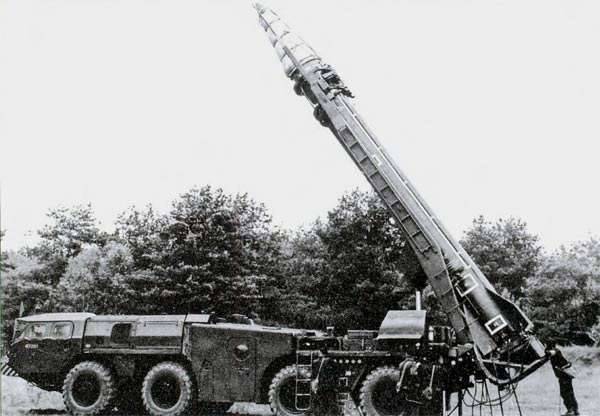
And although the presence of chemical weapons in the USSR was officially denied, P-17 missiles, except for nuclear ones, could carry chemical warheads. Initially, the combat units were equipped with a mustard-lewisite mixture. At the end of the 60-x cassette warheads with the binary substance of the nerve agent P-33, which in many respects was similar to the western VX VX, were put into service. This nerve poison is the most toxic of the ever artificially synthesized substances used in chemical weapons, it is 300 times more toxic than the phosgene used in the First World War. Weapons and military equipment exposed to the substance P-33, pose a danger to personnel in the warm season for several weeks. This persistent poisonous substance has the ability to be absorbed into paint and varnish coatings, which makes the degassing process very difficult. An area exposed to P-33 agents is rendered unusable for several weeks. The high-explosive warhead 8Ф44 weighing - 987 kg contained about 700 kg of powerful explosive THG-5. High-explosive warheads were mainly staffed with export missiles R-17E. In the USSR, they, as a rule, were used for control and training firing.
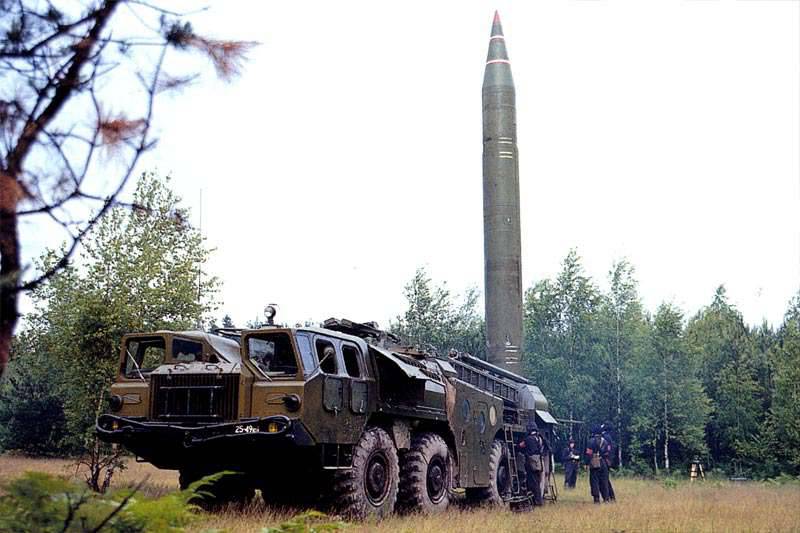
It would be erroneous to assume that the Elbrus missile complex 9K72 included only a rocket and a launcher. In the maintenance and combat use of OTRK, about 20 units of various towed and self-propelled vehicles were used. For refueling missiles used automobile refueller and oxidizer, special compressors and washing-neutralization machines. For testing and minor repairs of missiles and launchers, special mobile test and metrological machines and mobile workshops were used. "Special" combat units were transported in closed storage tanks with adjustable temperature. Loading of rockets on the self-propelled launcher from the transport vehicle was carried out by a truck crane.
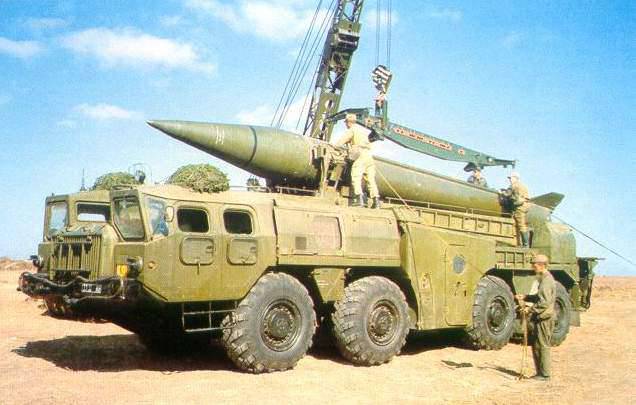
To determine the coordinates of the launcher, top-gates based on GAZ-66 were used. Data entry and management of the Elbrus complex took place from mobile control points. The material support platoon included tankers for cars, field kitchens, flatbed trucks, etc.
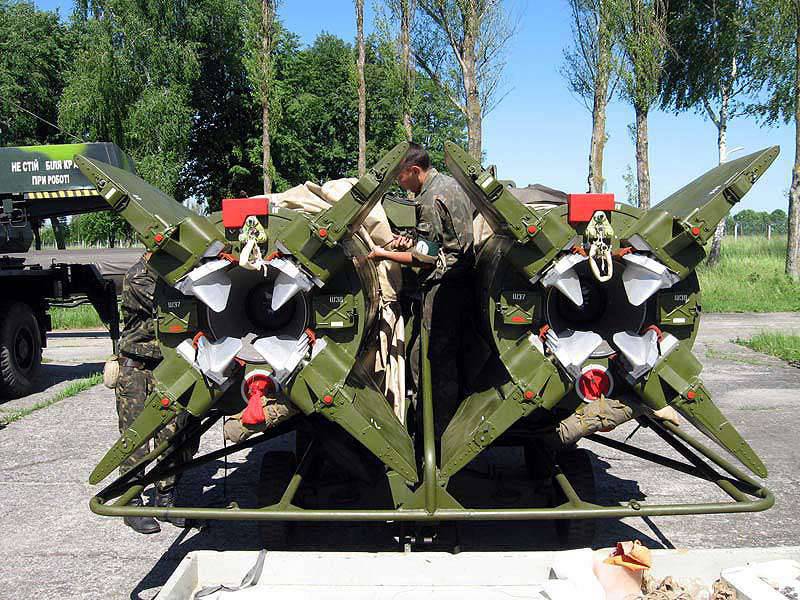
Over the years, OTRK services have been repeatedly upgraded. First of all it touched the rocket. The upgraded 8K14-1 rocket had better performance and could carry heavier warheads. Missiles differ only in the possibility of using combat units. The rest of the rocket 8K14-1 is completely interchangeable with 8K14 and does not differ in its performance characteristics. Missiles of all modifications could be used from any starting unit, they all had interchangeable console equipment. Over the years of production, it was possible to achieve a very high level of technical reliability of the missiles and to increase the time spent in the filled state from 1 to 7 years, the warranty period of service increased from 7 to 25 years.
At the beginning of the 60-x in the design bureau of the Votkinsk Machine-Building Plant, an attempt was made to radically modernize the Р-17 rocket by replacing the engine, the type of fuel and increasing the volume of fuel tanks. According to calculations, the launch range in this case was supposed to exceed 500 km. The updated tactical missile system, designated 9K77 "Record", was sent to the Kapustin Yar test site in 1964. In general, the tests were successful and ended in the 1967 year. But the new OTRK with the R-17M missile was not accepted for service. By that time, the Temp-S mobile missile system, which had higher characteristics, was created.
Another original project was an attempt to create an airmobile launcher 9K73. It was a lightweight four-wheel platform with a launch pad and a boom. Such a launcher could be quickly transferred by a transport plane or helicopter to a given area and from there to launch a rocket. For this purpose, a modification of the Mi-6PPTBV helicopter was created - a mobile rocket-technical base of a helicopter type.
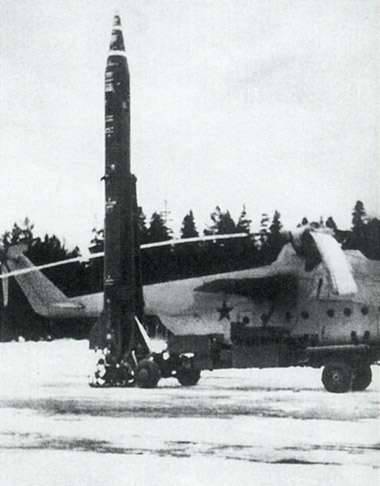
During the tests, the prototype of the platform demonstrated the fundamental possibility of quick landing and landing of a ballistic missile. However, the matter has not advanced further than the construction of a prototype. In order to carry out an aiming start, the calculation needs to know a number of parameters, such as: coordinates of the target and launcher, meteorological situation, etc. In the sixties, for determining and introducing these parameters into the rocket control system, it was not realistic to do without the participation of specialized complexes on a car chassis. And for the delivery of necessary equipment to the launch area, additional transport planes and helicopters were required. As a result, the idea of a “trimmed” light air transport launcher was abandoned.
By the second half of the 70-x complex began to become obsolete, and its characteristics are not fully consistent with modern requirements. Against the background of the emergence of modern solid-fuel missiles, the great criticism caused the need to refuel and drain fuel and oxidizer. The handling of these components, necessary for the operation of the LRE, has always been associated with greater risk. In addition, to save the life of the missiles after the oxidizer had been drained, a procedure was needed to neutralize the acid residues in the tank and pipelines.
Despite the difficulties of operating the OTRK "Elbrus" was well mastered by the troops, and due to the relative simplicity and cheapness of the missile, the P-17 was produced in a large series. Not too high accuracy of the missiles was partly compensated by powerful nuclear warheads, which are quite suitable for the destruction of enemy troop congestion or large area targets.
However, the use of tactical nuclear weapons threatened to grow into mutual nuclear annihilation, and in the "big war" the use of nuclear weapons is not always advisable. Therefore, in the 80-s in the USSR, work was carried out to improve the accuracy of the complex by creating a guided missile warhead within the framework of the Aerofon design and development.
Detachable warhead 9H78 mass 1017 kg in conventional equipment was aimed at the target on the final segment of the trajectory at the commands of the optical homing. To this end, in preparation for the launch, the “portrait” of the target was loaded into the memory of the guidance system. In compiling the “portrait” of the target, aerial photographs obtained by reconnaissance aircraft were used. The maximum range for the upgraded rocket 8K14-1F was 235 km, and the accuracy of the detachable warhead 9H78 was 50-100. The modified missile system included a data preparation machine and a data entry machine. Accuracy of the modified 9K72-1 complex strongly depended on the quality and scale of aerial photographs and weather conditions in the target area. In 1990, the complex was accepted into pilot operation, but was not mass-produced. By that time, the P-17 liquid missiles were hopelessly outdated, their production in Votkinsk was completed in the 1987 year.
But on this story OTRK "Elbrus" in our country is not over. Despite the fact that the missile system did not in many respects meet modern requirements due to the high prevalence and high cost of re-equipping rocket brigades with new equipment, it was still in service in the Russian army for about 10 years. In addition, outdated missile warranty periods were actively used as targets during training and testing of air defense and missile defense systems. To this end, the designers of the Votkinsk engineering plant created a target missile based on the P-17 rocket. Unlike the base rocket, the target did not carry the warhead. In its place in the armored capsule were placed the rocket control equipment and specialized telemetry systems designed to collect and transmit information about the flight parameters and the interception course to the ground. Thus, a target missile could transmit information for some time after a defeat until it fell to the ground. This allowed the firing of one target with several antimissiles.
The tactical missile system 9K72 "Elbrus", starting with 1973, was widely exported. In addition to the Warsaw Pact countries, OTRK was in service in Afghanistan, Vietnam, Egypt, Iraq, Yemen, Libya, and Syria.
Apparently, the Egyptians were the first to use the complex in combat during the “Doomsday War” in 1973. Unfortunately, there is no reliable data on the details of combat use. Apparently, the Egyptian rocket engineers did not achieve much success. Soon after Anwar Sadat became the president of Egypt, military-technical cooperation between our countries ceased. Moreover, the Egyptian leadership for the corresponding remuneration began to actively acquaint everyone with the latest models of Soviet technology. So at the end of 70's, MiG-23 fighter jets and air defenses were sent to the USA and China.
In 1979, three Egyptian OTRKs were sold to the DPRK, and Egyptian instructors helped prepare the North Korean calculations. Prior to this, in spite of Kim Il Sung’s insistent requests, the Soviet leadership, for fear that these complexes could get to China, refrained from supplying these weapons to the DPRK.
The P-17 missiles had a simple and understandable design for North Korean specialists, which, however, is not surprising - thousands of Koreans studied at Soviet technical colleges and underwent internships at research institutions and design bureaus. The DPRK has already been in service with the air defense missile system and anti-ship missiles, the missiles of which operated on similar components of fuel and oxidizer.
Metallurgical, chemical and instrument-making enterprises in the DPRK with the help of the USSR, which were necessary for developing their own version of the P-17, were built in 50-70-e, and copying the missiles did not cause any particular difficulties. Certain problems arose with the creation of devices autonomous inertial control system. The lack of stability of the magnetic semiconductor counter-decisive instrument of the automatic stabilization machine did not allow for satisfactory firing accuracy.
But the North Korean designers managed to solve all the problems with honor, and in the middle of 80, the North Korean version of the operational-tactical missile under the conventional name “Hwason-5” entered service. At the same time, the construction of a rocket-building infrastructure was going on in the DPRK. Its main elements were the Rocket Research Institute in Sanumdon, the 125-I factory in Pyongyang and the Musudanni missile test site. Starting in 1987, the production rate of the Hwaseong-5 missiles was 8-10 units per month.
At the end of the 80, the Korean version of the P-17 was seriously upgraded, a rocket known as “Hwason-6” could deliver an 700 kg warhead to a range of 500 km. In total, DPRK has built 700 Xvason-5 and Hwaseong-6 missiles. In addition to the North Korean army, they were supplied to the UAE, Vietnam, Congo, Libya, Syria, and Yemen. In 1987, Iran became the first buyer of a party of Hwaseong-5 missiles, this country received several hundred North Korean ballistic missiles.
Later in Iran, with the help of North Korean specialists, production of its own ground-to-ground missiles of the Shahab family was launched. Due to the increased capacity of the fuel and oxidizer tanks and the new North Korean engine, the Shahab-3 rocket, in service with the 2003 of the year, reached a flight range of 1100 — 1300 km with a warhead weight of 750 — 1000 kg.
The Scuds in combat were used during the Iran-Iraq war. During the so-called "war of cities" in six Iranian cities located in the launch zone, 189 missiles were fired, of which 135 in the capital, Tehran. To launch the P-17E missiles, in addition to the standard SPU 9P117, stationary concrete launch tables were used. Iran responded to Iraq’s missile strikes with similar DPRK missiles.
In 1986, Iraq began assembling its own P-17 variants - Al-Hussein and Al-Abbas. In order to increase the firing range, the weight of the warhead of Iraqi missiles was seriously reduced. Due to this, increased the capacity of fuel tanks and the length of the missiles. Iraqi Al Hussein and Al Abbas ballistic missiles have lightweight combat units with a weight reduced by 250-500 kg. With the launch range “Al Hussein” - 600 km and “Al Abbas” - 850 km, the QUO was 1000-3000 meters. With such accuracy, it was possible to deliver strikes effectively only on large area targets.
In 1991, during the Gulf War, Iraq launched 133 rockets across the territory of Bahrain, Israel, Kuwait and Saudi Arabia. The launch vehicles were mainly used by regular mobile launchers, since 12 stationary launch sites were destroyed in the first days, and 13 were seriously damaged as a result of air strikes. A total of 80 rockets fell in the target area, another 7 went off the trajectory, and the 46 were shot down.
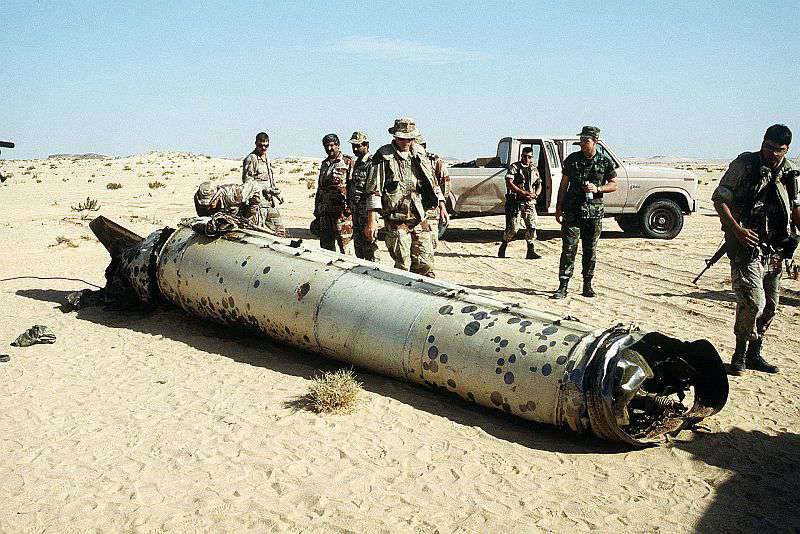
The Americans used the Patriot anti-aircraft missile systems against the Iraqi Scuds, but the effectiveness of their use was not very high. As a rule, 3-4 SAM was launched against Iraqi Scud alone. Often, the fragmentation warhead of MIM-104 SAM was able to break up a ballistic missile into several fragments, but the destruction of the warhead did not occur. As a result, the warhead fell and exploded not in the target area, but due to the unpredictability of the flight trajectory, the damaged rocket was no less dangerous.
In fairness it should be said that the accuracy of the Iraqi missile firing was extremely low. Often, the calculations tried to launch their missiles as quickly as possible just in the direction of the enemy and leave the starting positions. This was due to the fact that the most effective American anti-missile defense system was not the Patriot air defense missile system, but attack aircraft, which, day and night, were hunting Iraqi launchers. Therefore, launches of the OTP were carried out, as a rule, at night in great haste. During the day, Iraqi missile systems hid in various shelters, under bridges and overpasses. The only major success of Iraqis can be considered a rocket hit in the American barracks in the Saudi city of Dharam, resulting in the death of 28 American soldiers and about two hundred more were injured.
The 9K72 "Elbrus" complex was in service in our country for more than 30 years and for more than 15 years it was the basis of armament of the missile units of the Ground Forces. But by the second half of the 80's, it had already become obsolete. By that time, OTRK with solid-propellant rockets, which were smaller and had better service and operational characteristics, began to arrive in the troops.
The Afghan war was a good excuse for the combat "disposal" of aging liquid missiles. Especially since in the USSR over the years of production, they accumulated a lot, and a significant part of the missiles ended their storage periods. However, unforeseen difficulties arose: the main part of the P-17 missiles used in the Rocket Brigades of the Ground Forces were “sharpened” for “special” combat units, the use of which in Afghanistan was ruled out. For available on the bases of storage of rockets it was necessary to order high-explosive combat units at the plant in Votkinsk.
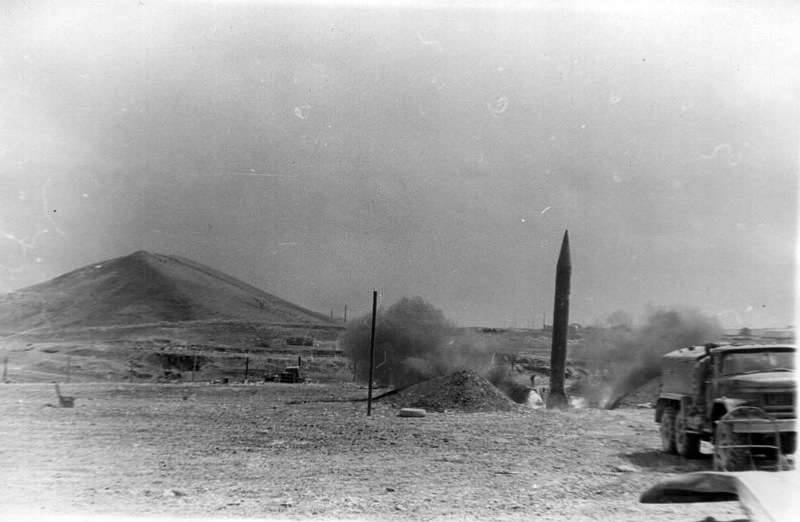
According to unconfirmed data, about 1000 missiles were launched in Afghanistan on the positions of the Mujahideen. As objects of rocket attacks were the sites of the accumulation of rebels, bases and fortifications. Their coordinates were extracted with the help of aerial reconnaissance. Due to the fact that the shooting was often conducted at a minimum range, a large amount of fuel and oxidizer remained in the tanks of the missiles, which, with the explosion of the warhead, gave a good incendiary effect.
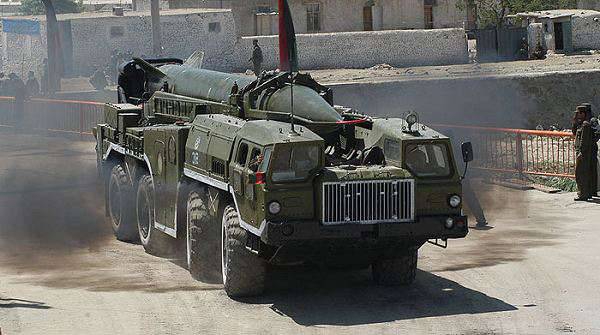
After the withdrawal of the "limited contingent", "Elbrus" remained at the disposal of the Afghan government forces. The Afghan army was not too scrupulous in selecting targets for missile strikes, often striking them at large settlements under the control of the opposition. In April, 1991, three rockets were launched around the city of Asadabad in eastern Afghanistan. One of the rockets fell on the city market, killing and injuring about 1000 people.
The last time the Russian P-17 missiles were used in combat during the Second Chechen War. By that time, there were almost no missile brigades in the Russian army armed with the Elbrus 9K72 complex, but a large number of expired missiles had accumulated in the warehouses. To attack the militants in the territory of the Chechen Republic, the 630-th separate missile division was formed. This military unit was based on the border with Chechnya not far from the village of Russkaya. From there, between 1 October 1999 of the year and 15 of April 2001, around 250 of 8K14-1 missiles were made. During the course of combat operations, missiles with expired storage periods were fired off, but not a single failure was recorded. After Russian troops took control of most of the territory of Chechnya, and there were no longer any worthy targets, the 630 Horde handed over the equipment to the storage base and redeployed to the Kapustin Yar test site. In 2005, this military unit of the first in the Russian army received the 9K720 "Iskander" complex. OTRK 9K72 "Elbrus" was in service in our country until 2000 year, when the missile brigades deployed in the Far East, changed it to 9K79-1 "Tochka-U".
Despite its age, OTRK continues to operate in different parts of the world. There is no doubt that we will hear more than once about the combat use of Scuds in hot spots. Tactical missiles made in the DPRK have become very popular goods in the countries of the "third world".
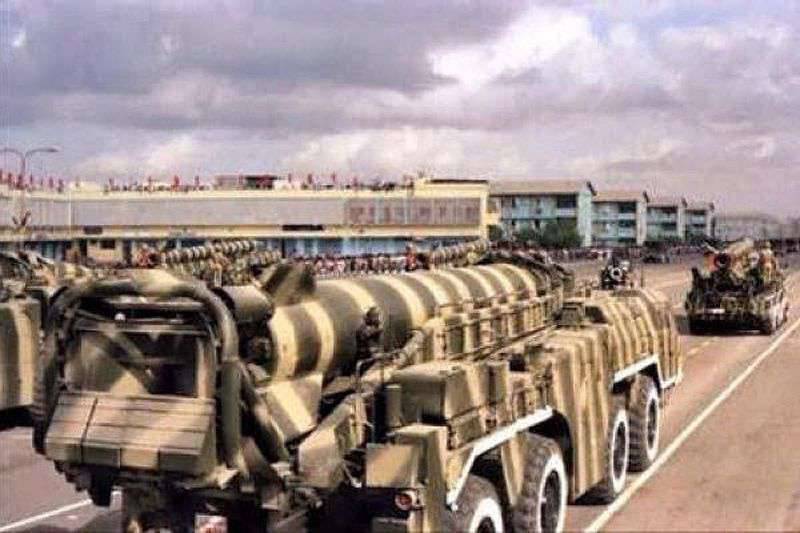
It is with these missiles that the Hussites in Yemen are shelling the positions of the Saudi coalition. As of 2010, there were 6 SPU and 33 rockets in Yemen. In 2015, around 20 missiles were launched across Saudi Arabia. Officials in Riyadh said that all of them were either shot down by the Patriot complexes or fell in a deserted desert. But according to Iranian and French sources, only three missiles were actually shot down. Approximately ten rockets hit the intended targets, while allegedly the head of the Saudi Arabian Air Force's headquarters was killed. It’s hard to say how true it all is, as everybody knows, in war, each side overestimates its own successes and hides losses, but one thing is certain, it’s too early to write off the Soviet missile system created by 54 a year ago.
Based on:
http://rbase.new-factoria.ru/missile/wobb/8k14/8k14.shtml
http://bastion-karpenko.narod.ru/R-17.pdf
http://militaryrussia.ru/blog/index-233.html
http://fas.org/nuke/guide/russia/theater/r-11.htm
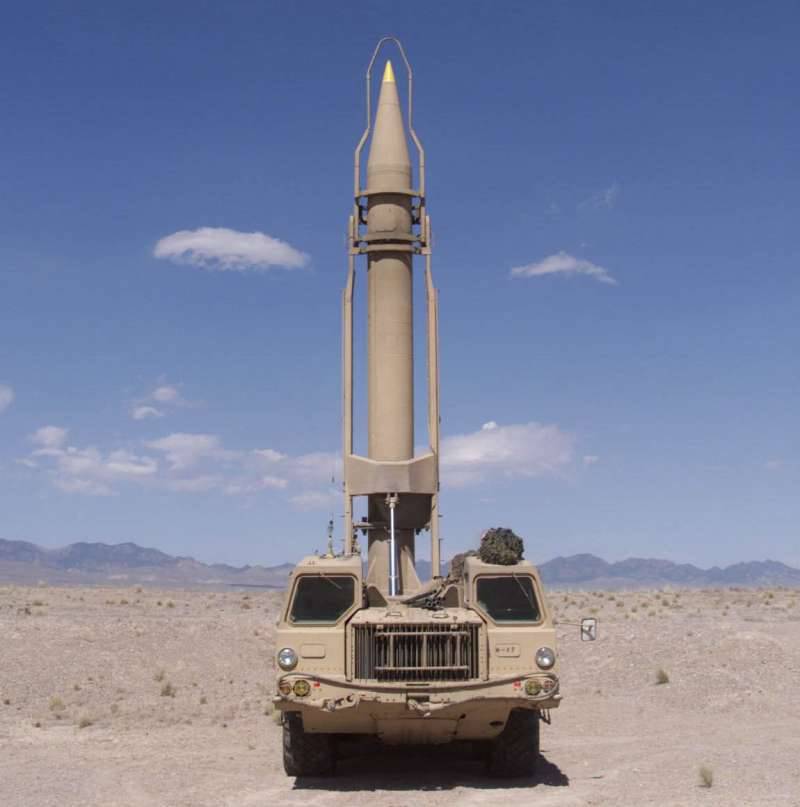
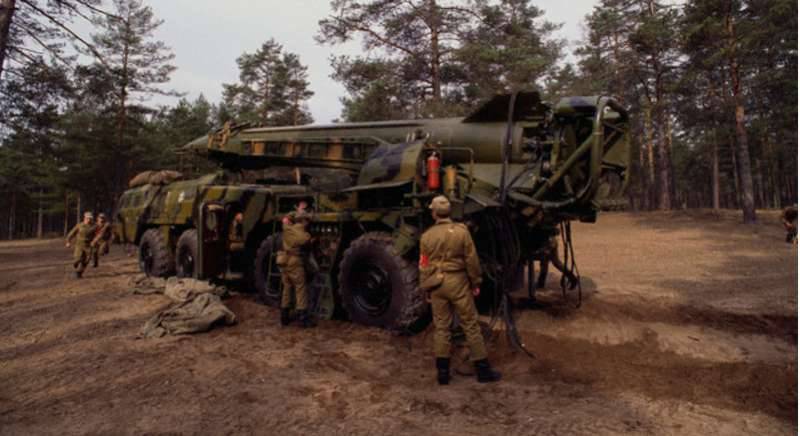
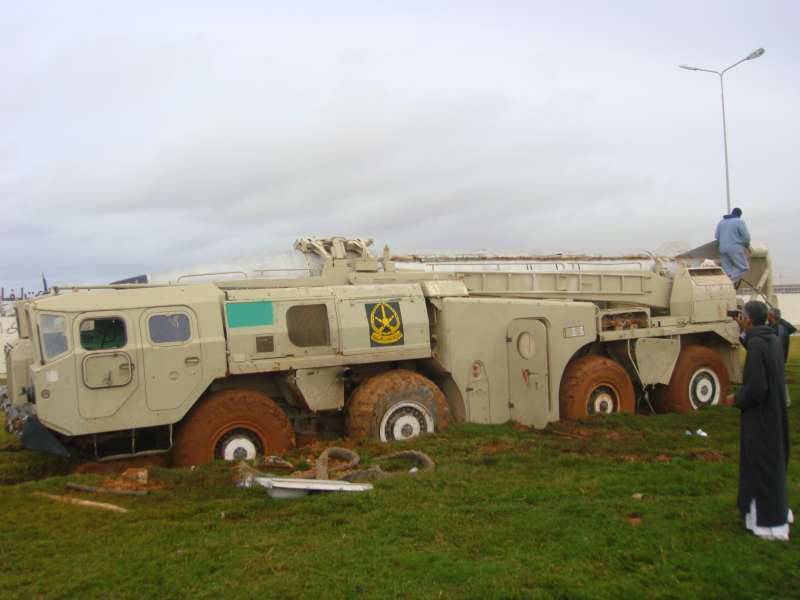
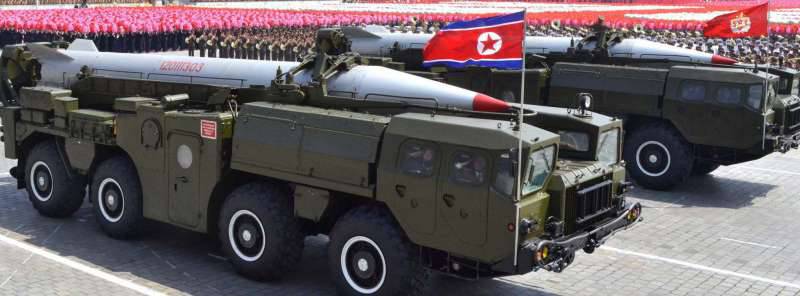
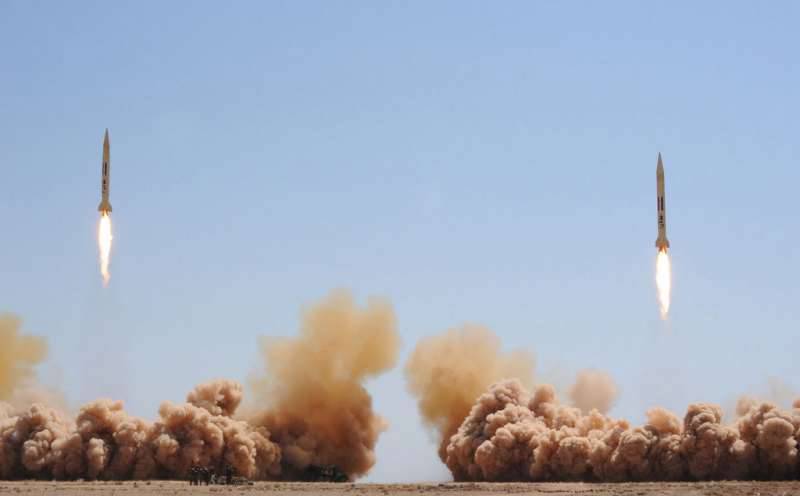
Information